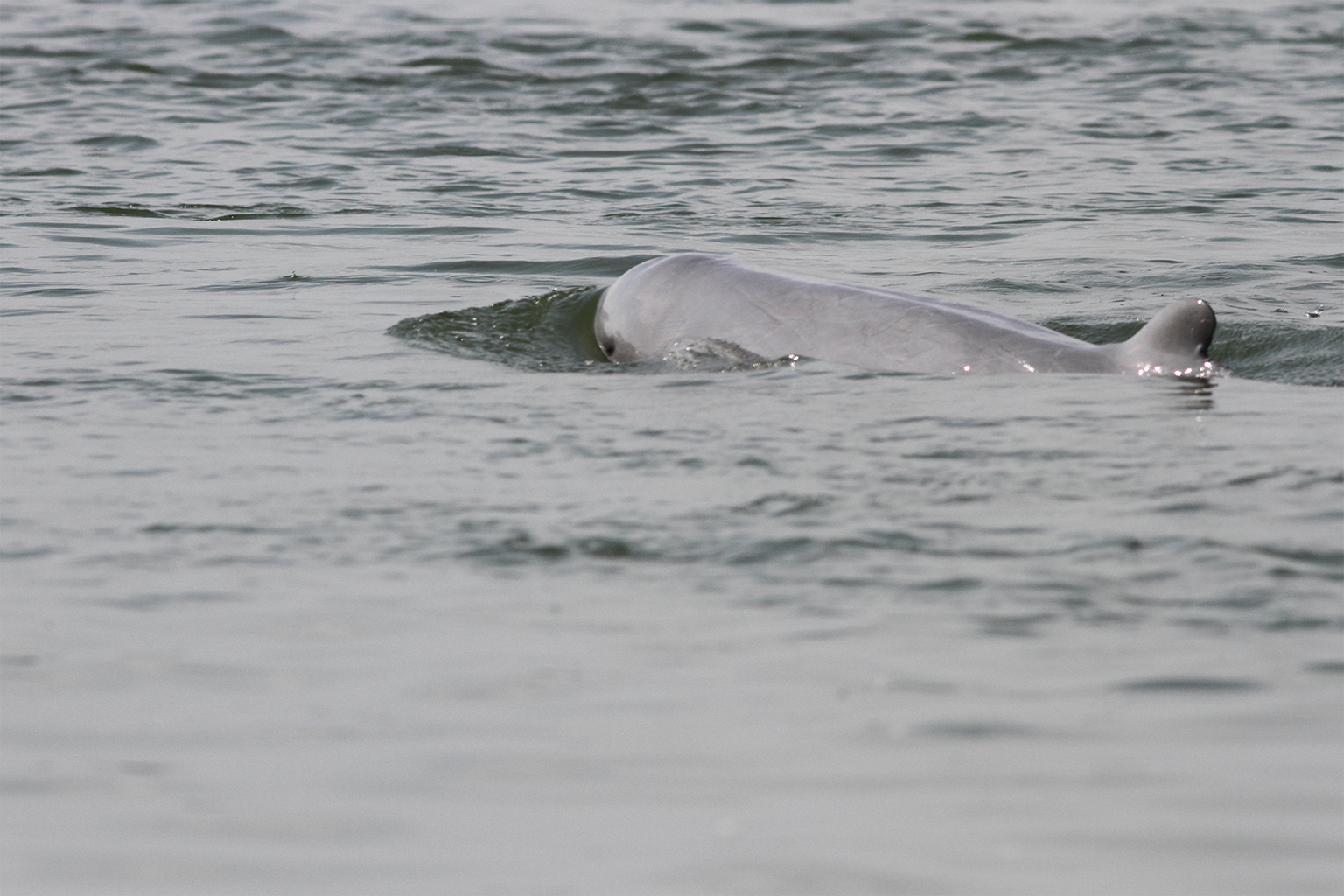- Bangladesh is home to around 2,000 Ganga River dolphins and 6,000 Irrawaddy dolphins, found mostly in the Sundarbans, the world’s largest mangrove forest.
- Both species, considered threatened on the IUCN Red List, run a high risk of entanglement in the gillnets used by local fishers.
- Gillnets are banned in Bangladesh, but remain popular among local fishers, with the government unable to crack down on their use.
- To conserve the freshwater dolphins, the government has embarked on a 10-year action plan that includes declaring more areas as dolphin sanctuaries and raising awareness among fishers.
The indiscriminate use of gillnets by fishers in Bangladesh has become a major threat to the two freshwater dolphin species found there: the Ganga River dolphin (Platanista gangetica) and the Irrawaddy dolphin (Orcaella brevirostris).
Both species, listed as threatened by the IUCN, the global wildlife conservation authority, are found in the Sundarbans, the world’s largest mangrove forest. Bangladesh is home to around 2,000 Ganga River dolphins and 6,000 Irrawaddy dolphins.
Known locally as shushuk, the Ganga River dolphin is a purely freshwater species that was once abundant in the Ganga-Brahmaputra-Meghna and Karnaphuli-Sangu river systems that run between Nepal, India and Bangladesh. But the dolphin is disappearing from much of its range for several reasons, including the widespread use of gillnets, habitat loss, and pollution.

A 2020 publication by the IUCN identifies entanglement in large- and small-mesh gillnets as a major threat to this endangered species in Bangladesh. Research published in 2022 cited United Nations Development Programme data showing that 130 Ganga River dolphins were killed in Bangladesh between 2007 and 2016, mostly from fishing nets or boat propellers.
The widespread use of gillnets means dolphins face a high risk of becoming entangled when they surface to breathe, said Monirul H. Khan, a zoology professor at Jahangirnagar University in Dhaka. “It becomes impossible for them to avoid the fishing nets,” he said.
Under a 2002 law, the manufacture, marketing, import, hoarding, carrying, possession or use of any kind of gillnet is prohibited. The measure is meant to check indiscriminate fishing and killing of aquatic species. But gillnets continue to be widely used by fishers, according to media reports, as they’re highly effective at catching large numbers of fish.
The government has often tried to crack down on their use, but to little avail amid pushback from users. Md Zia Haider Chowdhury, a project director of the Department of Fisheries, told Mongabay that users and manufacturers had filed several writ petitions against the 2002 ban, and failed to get positive verdicts from the courts, recently.” However, they are using the gear illegally, and we are trying to take strict measures against them,” he said.
The 2020 publication also highlights pollution from industrial, agricultural and other human activity as another major cause of the shrinking of the Ganga River dolphin’s habitat. About 9,000 metric tons of pesticides and 6 million metric tons of fertilizer are used annually in the vicinity of the dolphin’s river home, it says.
There’s also a large-scale industrial belt close to two major dolphin sanctuaries, Chadpai and Dhangimari, and a 1,320-megawatt coal-fired power plant in the species’ habitat, both of which have led to increased pollution through the release of coal dust and oil spills from vessels. WWF has also identified this type of pollution as a major reason for the loss of habitat and deaths of species like dolphins.


Sanctuaries and awareness building to save the dolphins
To address the situation, the Bangladesh government has embarked on a 10-year action plan to protect native dolphin species, including declaring more areas as dolphin sanctuaries and raising awareness among fishers.
In 2012, the Ministry of Environment, Forest and Climate Change identified and declared three wildlife sanctuaries, with a special emphasis on dolphins, in the Eastern Sundarbans Reserved Forest (ESRF). These are Dhangmari, Chandpai and Dudhmukhi, which cover 31.4 kilometers (19.5 miles) of river channels that are home to both Ganga River and Irrawaddy dolphins.
In 2020, the ministry declared three more dolphin sanctuaries in Pankhali, Sibsha and Bhodra, inside the Sundarbans.
Bangladesh also declared its first ever marine protected area in the Bay of Bengal in 2014 to conserve marine biodiversity, including dolphins.
Getting the conservation message across to fishers will be key, conservation officials say. Fishers tend to be unaware when dolphins get tangled in their nets, and only realize once it’s too late. Even if they manage to reel in dolphins alive, fishers tend to be too scared to act, or may not know what action to take.
“To make the fishing communities aware of the species and its importance, engagement through communication and education in the community is a must,” said Raquibul Amin, the IUCN’s country representative for Bangladesh.
He added that several initiatives have been launched at both the local and national levels, including school campaigns, to raise awareness of the importance of protecting the country’s dolphins.
Banner image: An Irrawaddy dolphin (Orcaella brevirostris). Bangladesh is home to around 6,000 Irrawaddy dolphins. Image by WWF-Cambodia/Gerard Ryan via Flickr (CC BY-NC-SA 2.0).
Saving the economically important hilsa fish comes at a cost to Bangladesh fishers
Citations:
Smith, B. D., Aminul Haque, A. K. M., Shakhawat Hossain, M., & Khan, A. (1998). River dolphins in Bangladesh: Conservation and the effects of water development. Environmental Management, 22, 323-335. doi:10.1007/s002679900108
Muzammel Hossain, Md. (2022). Perspective Chapter: Status of dolphin in the maritime area of Bangladesh. In Marine Mammals. doi:10.5772/intechopen.102022
Alam, A. B., Akhtar, F., Ahmed, S., Azmiri, K. Z., Fahad, Z. H., Haider, F. H., & Sharmin, N. (2020). Dolphins of Bangladesh: A conservation effort in Sundarban. Bangladesh Forest Department, IUCN Bangladesh and UNDP Bangladesh. Retrieved from https://www.academia.edu/45697497/Dolphins_of_Bangladesh
Feedback: Use this form to send a message to the author of this post. If you want to post a public comment, you can do that at the bottom of the page.
